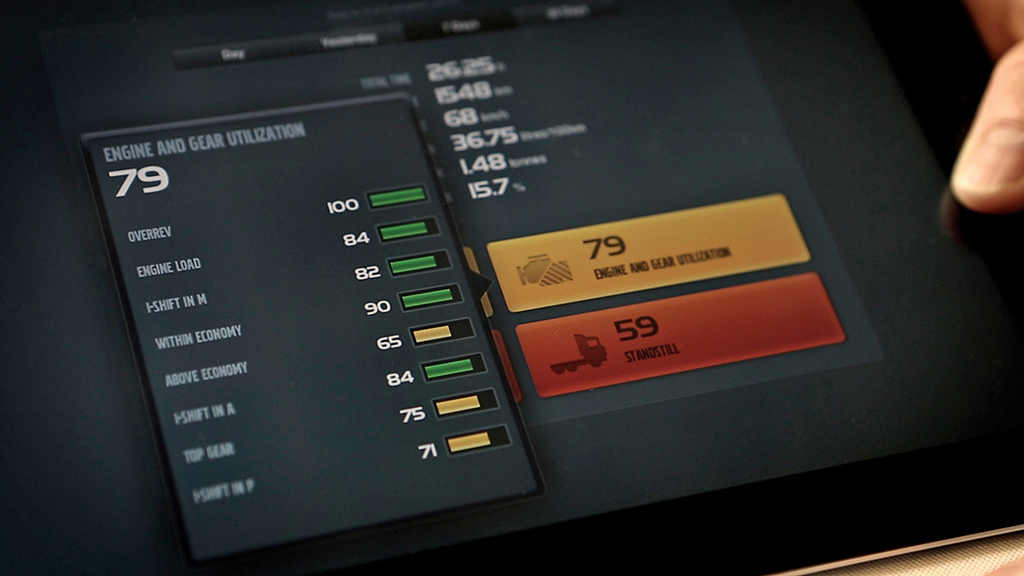Expert Panel - Telematics

With carbon reduction and air quality a pressing agenda for the UK government, our telematics expert panel share how technology and the data it provides can help fleets cut harmful emissions and run a more environmentally-responsible fleet
Transport accounts for around a quarter of UK greenhouse gas emissions. It also lets off NOx emissions and particulate matter (PM) which is harmful for air quality – so much so that research says it accounts for 40,000 early deaths a year in the UK. As such, the government is about to be taken to court for a third time for failing to properly address the problem.
Fleets and freight make up a significant portion of road users, and therefore have a big role to play in reducing harmful emissions from their vehicles. Adopting cleaner vehicles, driving them more efficiently, and cutting out unnecessary journeys are three ways fleets can make a difference.
In order to do this, fleet operators need insight into how their vehicles are performing, how their drivers behave behind the wheel, and what types of journeys they do. Telematics gives fleet managers data on vehicles, driving style and routes so they can identify where changes can be made.
There is a good choice of cleaner vehicles on the market these days, but if they are driven inefficiently, by harsh braking, idling or speeding – they will still burn unnecessary fuel and let out more emissions. Identifying staff that drive in such a way means a company can introduce driver training, and possibly offer incentives for those that improve.
“The driver is the single biggest impact on fuel consumption,” says Colin Ferguson from Trakm8. “Driver behaviour systems enable employees and fleet managers to monitor, analyse and improve driving behaviour in four key areas – excessive acceleration, idling times, heavy braking, and sharp cornering. In our experience, it can cut fuel costs by up to 15 per cent; a huge saving.”
Darryll Finch from O2 Smart Vehicle agrees that telematics can help build a “behaviour profile” of each driver. He says: “Real-time information on everything from seat belt use, speed and idling time to acceleration/deceleration, and erratic driving helps businesses build a clear, comprehensive behaviour profile of each driver. From there, they can work with drivers to address and correct poor driving habits that are either unsafe or inefficient and contributing to unnecessary fuel consumption.”
Lightfoot’s Martin Kadhim echoes these thoughts, saying that technology “ensures that each mile travelled is done so in a smooth and efficient manner, eradicating harsh and toxin-heavy manoeuvres from everyday driving.”
Explaining how Lightfoot tackles driver behaviour, Martin Kadhim says: “Our technology acts as the voice of a vehicle, coaching the driver in real-time to enable them to maintain a smooth and steady driving style which, in turn, reduces both fuel consumption and emissions.”
The right route
Whilst driver performance is clearly a major factor in reducing fuel-usage and emissions, the types of journeys undertaken also have a big impact. Telematics can show which routes are too long or congested, or even unnecessary in the first place, so that better route planning can be implemented, or fewer journeys can be undertaken.
“Ensuring your fleet operates at the optimum efficiency in the day, completing only the miles that it needs to, ensures that excessive fuel is not used through excessive distances,” says Mike Hemming from Masternaut.
He adds: “Fleets can apply the same principles to out of hours mileage as well; policing your vehicle use in the evening or at the weekends can ensure that you only use the fuel you need to, which will in turn minimise your environmental impact.”
Colin Ferguson from Trakm8 comments: “We increasingly see telematics integrated with route optimisation and fleet scheduling tools. By increasing vehicle utilisation and eliminating unnecessary mileage, optimisation can also substantially cut total fleet fuel consumption. A broad measure would be by roughly ten per cent, but it varies from fleet to fleet.
Colin adds: “Increasing vehicle utilisation is going to become increasingly important, as it can reduce the number of vehicles on our roads. Freight sharing is a growing trend and works best when powered by optimisation software.”
Darryll Finch from O2 Smart Vehicle says telematics can also give an insight into the vehicle and how it is performing. He says: “By working with a larger pool of vehicle data, managers can see when a particular vehicle has ceased to be fuel efficient and may need to be retired. And with more proactive maintenance reducing breakdowns, the life of each vehicle can be extended and scrappage delayed – cutting the environmental impact.”
Promoting electric adoption
There is a good range of ultra-low or zero‑emission vehicles on the market today. Whilst adoption of these vehicles is relatively slow, it is on an upward trend.
Since the launch of the Plug-In Car Grant in January 2011, there have been 100,041 eligible cars registered, according to SMMT figures. Pure EV sales surged in May this year, with a 79 per cent increase in registrations compared to the same period last year.
Vehicle price, range and a limited charging infrastructure are still cited as the main concerns for those not going down the EV route. But can telematics help quash some of these fears?
Most electric vehicles are connected, meaning they utilise the internet to connect them with the outside world. This allows the vehicle to let drivers know where nearby charging points are and keep them updated on battery life.
Telematics can also help EV drivers with journey planning, taking into consideration the range of the vehicle. For example, should the range not be enough to reach the final destination, the system could suggest driving to a train station with a car park with charge points, doing the remainder of the journey on train, and then returning to a fully charged vehicle. This journey planning is enhanced with real‑time information on how trains are running and whether there is traffic on route.
“Telematics helps EV drivers and fleet managers plot the distance to the nearest charging station, get directions to the station, project the travel distance until another charge is required, and much more,” says Darryll Finch from O2 Smart Vehicle says. “This allows EV fleet managers to instruct drivers on when and where to charge their vehicles, putting the responsibility in the hands of each driver.”
Crucially, telematics data can also help organisations assess whether an electric fleet is suitable for their operations in the first place. “Telematics can play an important role in analysing whether a vehicle fleet is compatible with the use of electric vehicles,” explains Mike Hemming from Masternaut.
“Using telematics to analyse low mileage diesel vehicles can really highlight where an electric vehicle may be more cost efficient. For example, this could be a pool car that is only used to drive between local offices.
A diesel vehicle would have a higher cost per mile for this type of use, and because the local offices are likely to be able to provide a recharging point it would make good business sense to replace with electric.”
Colin Ferguson from Trakm8 also believes that analysing a fleet using telematics data can help identify which vehicles and routes would benefit from switching to EVs.
He says: “Optimisation works by analysing how a fleet operates, then using powerful algorithms to identify efficiency gains. This same fleet analysis can also identify which vehicles and routes could be switched to EVs, in a way that doesn’t negatively impact the organisation’s overall performance.”
Colin adds: “Specialist EV optimisation tools also help fleets to sweat these comparatively high-value assets. Every additional electric mile means less emissions and lower fuel bills. A good system should be able to optimise a mixed fleet containing diesel, petrol, hybrid, EV and any other alternative fuel vehicles.”
Martin Kadhim from Lightfoot highlights the importance of driver behaviour in electric vehicles as it “directly impacts range”. He says: “The basic principle is that you need to enable the vehicle to be driven as efficiently as possible by giving the driver simple, real‑time feedback. By doing this, the range can be expanded to a significant degree and that makes the electric vehicle a more useful and practical proposition.”
Air quality
In the last couple of years, there has been a greater understanding on how NOx emissions negatively affect air quality and public health. Whilst fleets managers have become accustomed to measuring and reducing their carbon emissions, NOx and PM may not be so familiar. Can telematics help drivers become less polluting in this area, or at least become more aware of the problem?
Darryll Finch from O2 Smart Vehicle says: “Telematics solutions that track Adblue levels help ensure NOx emissions are maintained and businesses are compliant, arming fleet managers with valuable information. By combining this information with geographic location, fleet managers can pinpoint an accurate calculation of a vehicle’s environmental impact.”
Mike Hemming from Masternaut believes that air quality measures are an extension of the work already done to reduce emissions through better driving. He says: “If a driver is improving their MPG then they will naturally be reducing emissions.”
Martin Kadhim from Lightfoot echoes this thought, saying: “The fastest and most effective way to reduce harmful emissions affecting air quality is to ensure vehicles, whatever their type, are driven more efficiently.
At Lightfoot we have learnt this requires three core components: technology to measure how efficiently it is being driven; real-time feedback to nudge the driver to make adjustments to their driving style, and incentives to encourage them to do the right thing. Taken together, these can easily result in an immediate and sustainable reduction in NOx emissions of 20 per cent or more (as verified for Lightfoot by the University of Bath).”
Colin Ferguson from Trakm8 cites vehicle idling time as a great example of the type of driving that can be monitored and improved through telematics. He says: “Route optimisation used to be about using today to plan tomorrow’s fleet activities.
While that is still often the case, optimisation has also evolved to offer dynamic scheduling. This enables fleets to re-route vehicles, in real time, to keep them out of areas that are experiencing unexpectedly high traffic congestion.”
Focusing specifically on low-emission zones, Mike Hemming from Masternaut says: “Vehicle users are already pushing telematics providers to analyse their current vehicle operations within low emission zones. Which is leading to large scale cost benefit studies of vehicle work patterns, the cost of operating in low emission zones and the cost of replacing the vehicles for a lower emission models. This will only increase as these zones become more popular.”
The diesel debate
Diesel has received its fair share of negativity in the last couple of years. Recently, a report from an economist from Stanford University suggested that in the next eight years, there will be no more petrol or diesel cars, buses or trucks sold in the world, only electric vehicles – which will lead to a collapse of oil prices and the petrol and diesel industry.
However, the SMMT have been quite vocal in defending new, Euro 6 diesels, saying that they are the cleanest in history and play a critical part in improving air quality.
So what are our panelists thoughts on the future of diesels?
“The new Euro 6 standard has made the tests even more stringent for diesel vehicles, with a key focus on the harmful NOx component,” comments Mike Hemming from Masternaut. “However this has not stopped some councils singling out diesel vehicles as a whole. Councils in London have started to implement a surcharge on all diesel vehicles no matter the age. Considering then that a Euro 6 petrol vehicle can output twice as much CO2 as a diesel one, this would seem a little out of sync.”
Colin Ferguson from Trakm8 says: “Urban air pollution kills around 40,000 people a year in the UK. That’s a horrifically high number. So in principle, I fully support measures to remove diesel vehicles from town and city centres. However I am in favour of incentives to accelerate the switch to lower emission, less polluting vehicles, rather than penalising the owners of diesel vehicles.”
Darryl Finch from O2 says: “The UK government has clear objectives to reduce carbon, especially in built-up areas with large populations. So truck manufacturers and governing bodies have a responsibility to work together in the delivery of a strategy that will reduce carbon by making diesel engines more efficient. In addition, a scrappage scheme would be beneficial to businesses that have older, emission-inefficient vehicles.”
Martin Kadhim from Lightfoot says that there are many situations where a new, modern and efficient diesel vehicle will have a lower impact on the environment and on air quality than a petrol vehicle. Bringing it back to driver behaviour, Martin says: “The key thing though is that the impact of the driver is more important than the engine type or drivetrain. An efficient vehicle, if driven like it has been stolen, will deliver worse performance than a less efficient vehicle driven well.”
Looking to the future of emissions standards, Mike Hemming from Masternaut concludes: “The tests used to define these standards are something that need to be considered moving forward. The laboratory tests used to define these standards are often not very representative of the way vehicles are used in the real world. With telematics now being either installed by manufacturers or the vehicle users, true, live measurements are possible as the vehicle operates in the real world. This would allow consumers to base a purchasing decision on real world emissions data.”
Expert final thoughts
Darryll Finch
The UK Government have clear objectives to reduce carbon, especially in built-up areas with large populations. So truck manufacturers and governing bodies have a responsibility to work together in the delivery of a strategy that will reduce carbon by making diesel engines more efficient.
In addition, a scrappage scheme would be beneficial to businesses that have older, emission-inefficient vehicles.
Colin Ferguson
Urban air pollution kills around 40,000 people a year in the UK. That’s a horrifically high number. So in principle, I fully support measures to remove diesel vehicles from town and city centres. However we have to balance that with access for goods vehicles that are the lifeblood of urban areas.
It’s completely unfair to expect fleets or diesel drivers to foot the bill without any assistance from government. I am in favour of incentives to accelerate the switch to lower emission vehicles, rather than penalising diesel owners.
Martin Kadhim
The impact of the driver is more important than the engine type or drivetrain. An efficient vehicle, if driven like it has been stolen, will deliver worse performance than a less efficient vehicle driven well.
With Lightfoot we focus on getting all drivers in all vehicle types to become smoother, steadier and safer drivers and that has an immediate and positive impact on reducing harmful CO2 and NOx emissions.
Mike Hemming
The tests used to define emissions standards are something that need to be considered moving forward. The laboratory tests used to define these standards are often not very representative of the way vehicles are used in the real world.
With telematics now being either installed by manufacturers or the vehicle users, true, live measurements are possible as the vehicle operates in the real world. Much in the same way a vehicle never really achieves the MPG reported by a manufacturer, consumers would be able to base a purchasing decision on real world emissions data as well.






